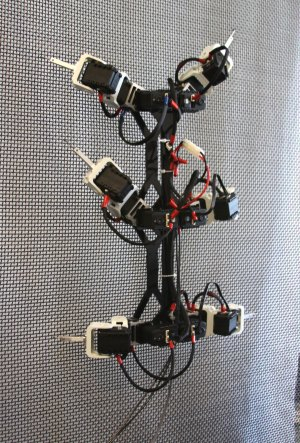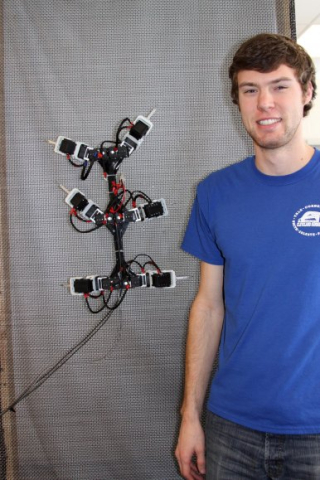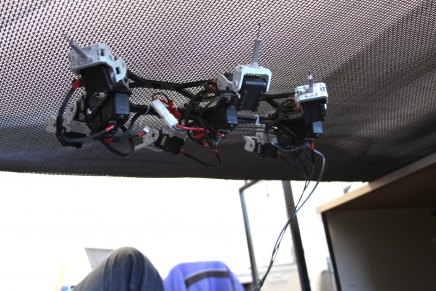DIGbot is a hexapod climbing robot under development by Luther Palmer and Eric Diller. DIGbot’s name comes from its utilization of Distributed Inward Gripping (DIG) to generate adhesive forces.
DIG allows robots to climb on surfaces of any orientation with respect to gravity, including ceilings or zero gravity environments.
DIGbot was driven by 19 servomotors which allowed the robot to execute complex climbing maneuvers such as turns and transitions from vertical to horizontal climbing at any angle.
Below is a video of DIGbot performing vertical climbing. In the first two clips, DIGbot performs several steps with slight assistance from Eric for attachment and detachment of spines. He’s applying slight pressure toward the screen to keep the robot from falling backwards. However, in the final clip DIGbot climbs without any assistance.
Below is a video of DIGbot performing inverted climbing at an angle of 45 degrees.
Below is a video of DIGbot climbing with compliant feet. The feet allow the spine angle to remain constant with respect to the screen. DIGbot is able to perform turning maneuvers on a vertical surface.
Below is a video of DIGbot climbing inverted. Notice in step number 3 that the front foot has a difficult time finding a foothold. DIGbot does not move forward until it finds one.
DIGbot climbs on everyday surfaces, such as a telephone pole, tree trunk and vertical carpet. Different foot designs are used for each surface. In this video, gripping force is used as feedback when climbing the pole and tree. However, on the carpet, DIGbot demonstrates its ability to climb without any feedback.



